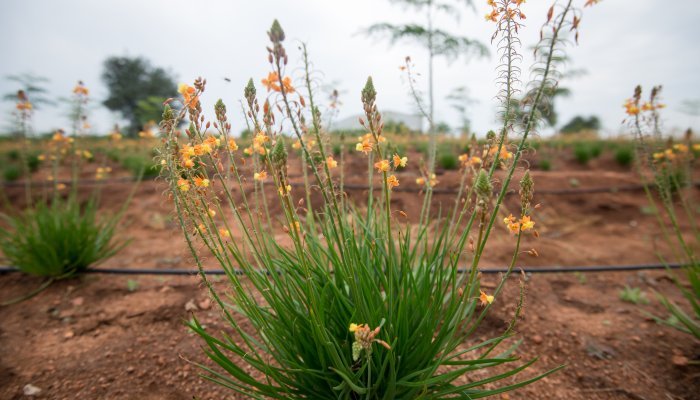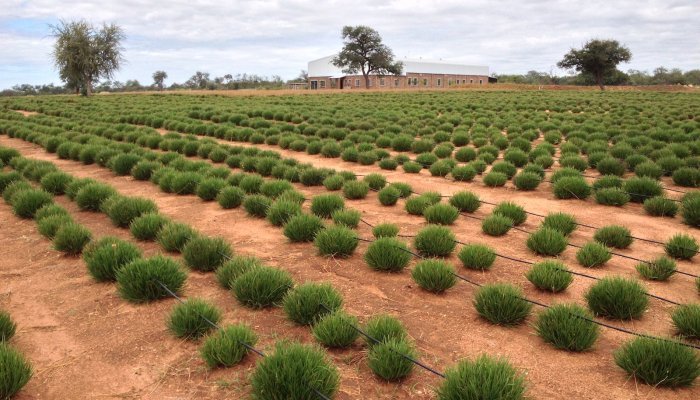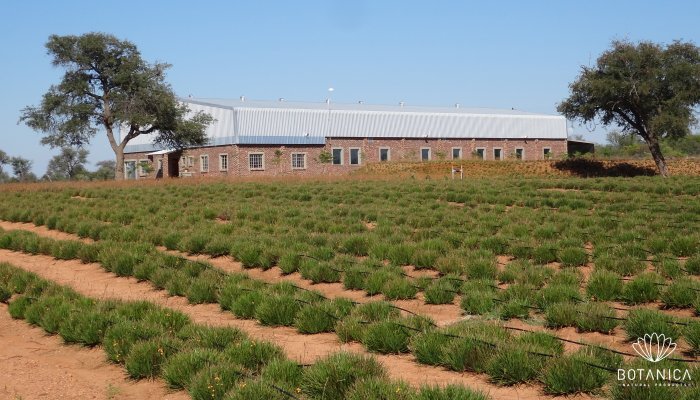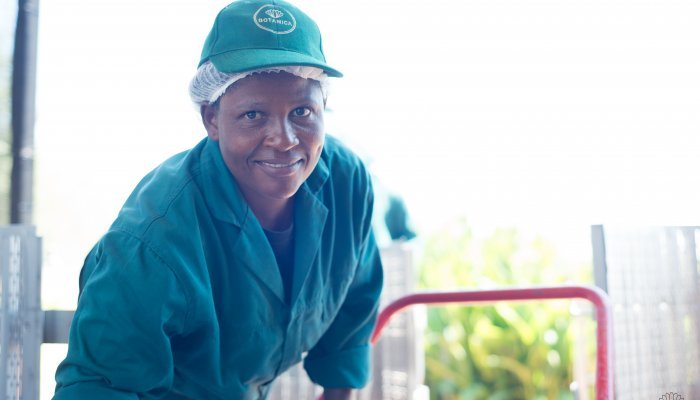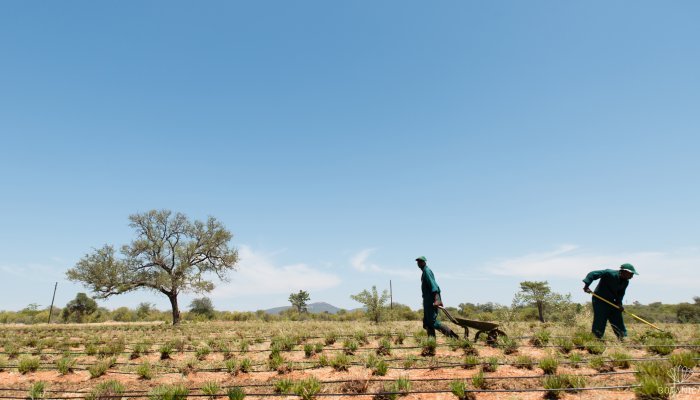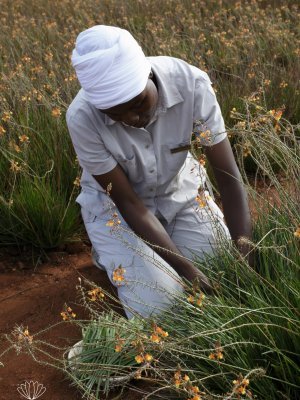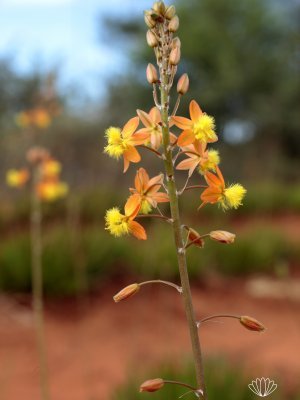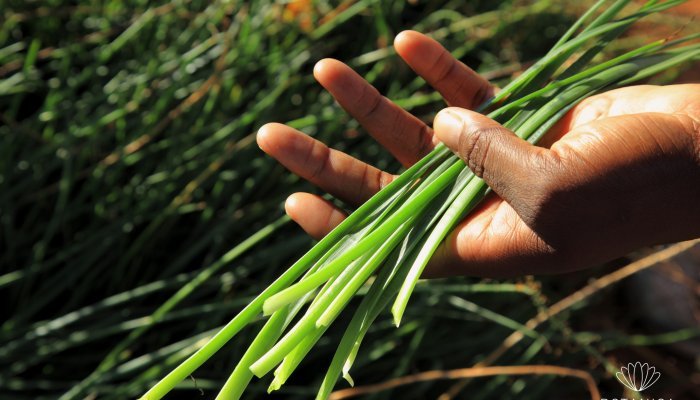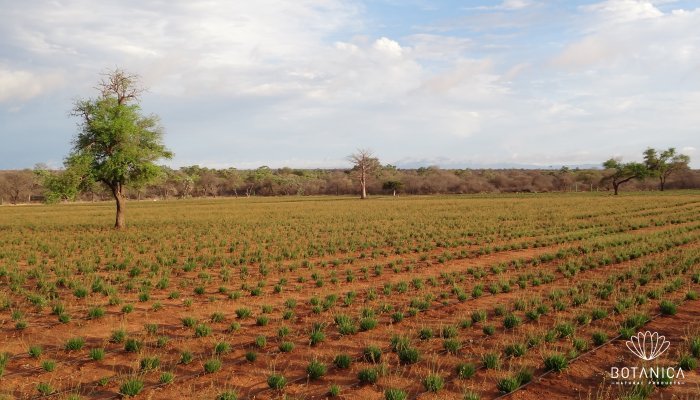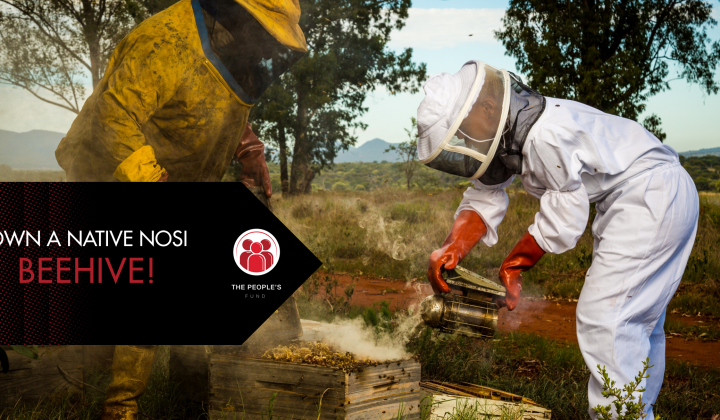The story behind Botanica Natural Products has its beginnings in 2008, on Mogalakwena Game Reserve near Alldays in South Africa’s Limpopo Province. Brothers Wilhelm and Christiaan Coetsee, the reserve’s owners, were hosting a Frenchman by the name of Michel Colson. In the course of a guided walk one morning Colson had spotted a cluster of aloe-like plants with long, spindly stems, covered in little yellow flowers. He had asked about them, and Chris Coetsee had rather dismissively said, oh, those are my mum’s medicinal plants. The plant in question was Bulbine frutescens, known to many south Africans simply as Bulbine, or geel katsert (yellow cat’s tail), on account of its long stems.
Colson’s eyes lit up. The Coetsee boys now learned that the man they were hosting had dedicated 45 years of his life to sourcing indigenous medicinal plant extracts for the European cosmetics industry. Heard of Shea Butter, the famous skin moisturizing substance from Burkina Faso? Well, Colson was instrumental in its commercialization in the early 70s.
"Michel had learned that if there’s any traditional knowledge associated with a plant, there’s bound to be something interesting in it. He pushed us for more information and my father explained that our family had long used it to treat burns and insect bites, as many South Africans do," said Coetsee, who, with his shaved head and lecture-hall glasses, seems an unlikely denizen of the Koedoesrand bushveld.
Colson rushed to the nearest pharmacy (150 kilometres away in Polokwane), and bought a very basic preservative. He rolled gel out of a few Bulbine plants, preserved it and returned to Europe.
"The people who tested it told him that, in terms of its medicinal properties, Bulbine was similar to aloe vera, but actually far more effective – like aloe vera on steroids," said Coetsee.
Colson’s connections were very interested in promoting Bulbine to the cosmetics industry as an interesting new active ingredient, and wanted to know where they could buy more of the stuff.
"We scoured the country and found that there were a couple of cottage industry operations, but nothing on a commercial scale. Michel was very excited by this, and asked us whether we would be able to produce the plants," he said.
Local laws
In the 90s and early 2000s the beauty and personal healthcare industries were booming, and the world’s largest pharmaceutical and cosmetics companies were out energetically seeking the next big active ingredient. With over 22,000 plant species South Africa seemed poised to benefit, but the passing of a series of noble but poorly designed laws aimed at protecting traditional knowledge systems choked investor interest.
Coetsee, then just 28, was aware of the challenges, and they interested rather than intimidated him. During his years as a MBA student at the University of Stellenbosch Business School he had read and re-read the Blue Ocean Strategy of Chan Kim and Renée Mauborgne, which makes the case for operating in uncontested (blue ocean) market space rather than overcrowded ‘red ocean’ markets.
South Africa’s 500 or so medicinal plants were certainly swimming in the blue, with less than 10% having been commercialised.
"We decided to test the waters by preparing a 0.3 ha plot and propagating the plants we already had," said Coetsee.
Colson meanwhile approached a cosmetics industry client in Hamburg, which expressed an interest in buying Bulbine extract. A joint business venture called Botanica Natural Products was swiftly set up, comprising the German company and the Coetsee and Colson family businesses. Funding was secured in the form of a grant from the Dutch government.
"It was a development and innovation grant, so there had to be a social upliftment aspect and some originality. We ticked both boxes because the project, which was something nobody had ever attempted before, was creating new jobs in a jobs-scarce part of the country," said Coetsee.
A process was designed for extracting Bulbine gel, and a factory was developed on one of the Coetsee farms in the Alldays district.
"Progress was often slow because we simply did not know what we did not know," said Coetsee.
Germany
By 2011, 160,000 plants had been successfully propagated from the original 40. Visitors to the farm would not have known this, however, because the field was tucked away in a remote corner.
‘It was like agricultural fight club. We couldn’t speak about these developments at the time because our German partner was petrified they would lose first mover advantage,’ he said.
Next, the business partners faced the problem of how to commercialize their product. To begin with, they marketed their healing gel to companies in Europe. They approached Beiersdorf, for example, the owner of NIVEA.
"We thought we were going to rake in the Euros," said Coetsee, "but when we met representatives of these big companies the first thing they wanted to know was: who else is doing this? We said nobody, that’s why it’s so exciting. And they said, yes, for you maybe, but we’re not going to go to the lengths of launching a product with all the related expense only for your company to fold, leaving us without a supplier. They told us to get back to them when some more people had started similar operations to ours."
Coetsee and his partners were left with the problem of how to get their gel into a saleable formulation, because Bulbine extract is not a final product on its own.
‘Between 2 – 5% will go into a product, no more. We had the idea of promoting the extract as a rare, premium ingredient, and again felt we had recipe for lots of Euros, but nothing happened, and nothing carried on happening,’ Coetsee recalled. Eventually the German chemicals supplier - a four billion Euro company - decided that selling a few hundred kilos of Bulbine extract a year wasn’t worthwhile, and pulled out.
Skin-lighteners and tatoos
Colson suggested a turn away from Europe towards West Africa, a market he was familiar with.
"We sent some samples to his West African buyers and they came back to us within three months with a five-tonne order," said Coetsee.
"Once again, it was a case of us not knowing what we did not know. In West Africa, the two major cosmetics sales categories are skin lighteners and hair straighteners, and West African fashionistas believe that if a product hasn’t worked within three weeks then it isn’t going to work. To meet these high expectations, a lot of cosmetics producers peddle terribly harmful stuff, which badly burns the skin. This, in turn, has created a market for products that relieve and treat chemical burns," Coetsee explained.
Coetsee and his partners named their extract BotanicaTIMOLA – timola being the Sepedi word for ‘soothe’. Large monthly orders continued to roll in from West African cosmetics companies, and the factory in Alldays was suddenly working hard.
"Between 2015 and 2016, Botanica Natural Products decreased its reliance on shareholder loans by 80%, and in early 2016 the company broke even operationally," said Coetsee.
Sales have continued to grow with the independent introduction of the extract into new geographical locations, including the United States, the United Kingdom and Australia. One of the developments driving Botanica sales is the use of Bulbine in products for tattoo aftercare.
"It is used to soothe the tattooed area, and apparently, it also helps to bind the ink to skin," said Coetsee, adding that local interest in commercially growing and supplying Bulbine has taken off in the last half year.
"Not bad for a traffic island filler," quipped Coetsee, with the air of someone who has embraced unpredictability as a life-giving force.
"...our family had long used it to treat burns and insect bites, as many South Africans do,’"
"It is used to soothe the tattooed area, and apparently, it also helps to bind the ink to skin,"


